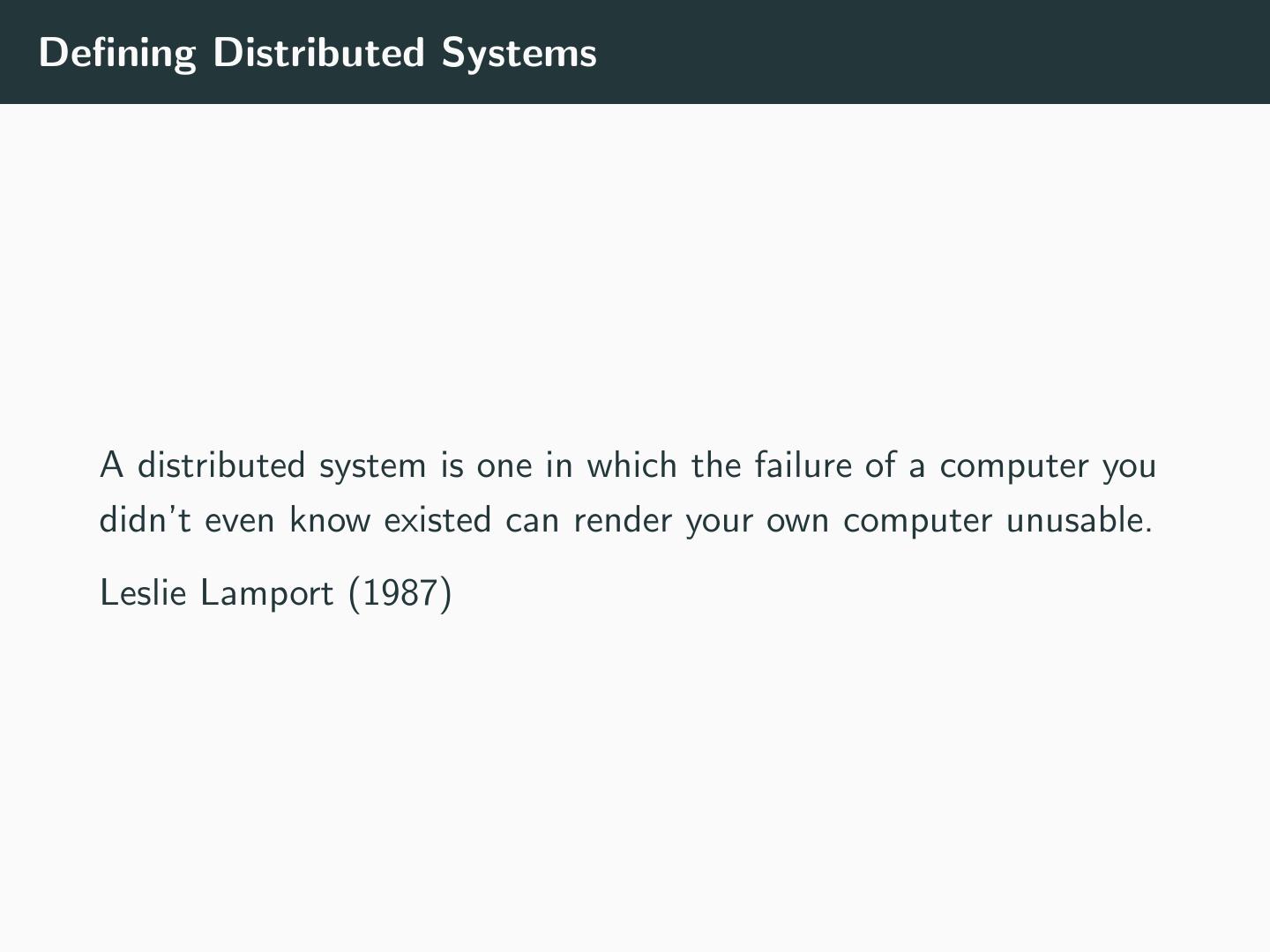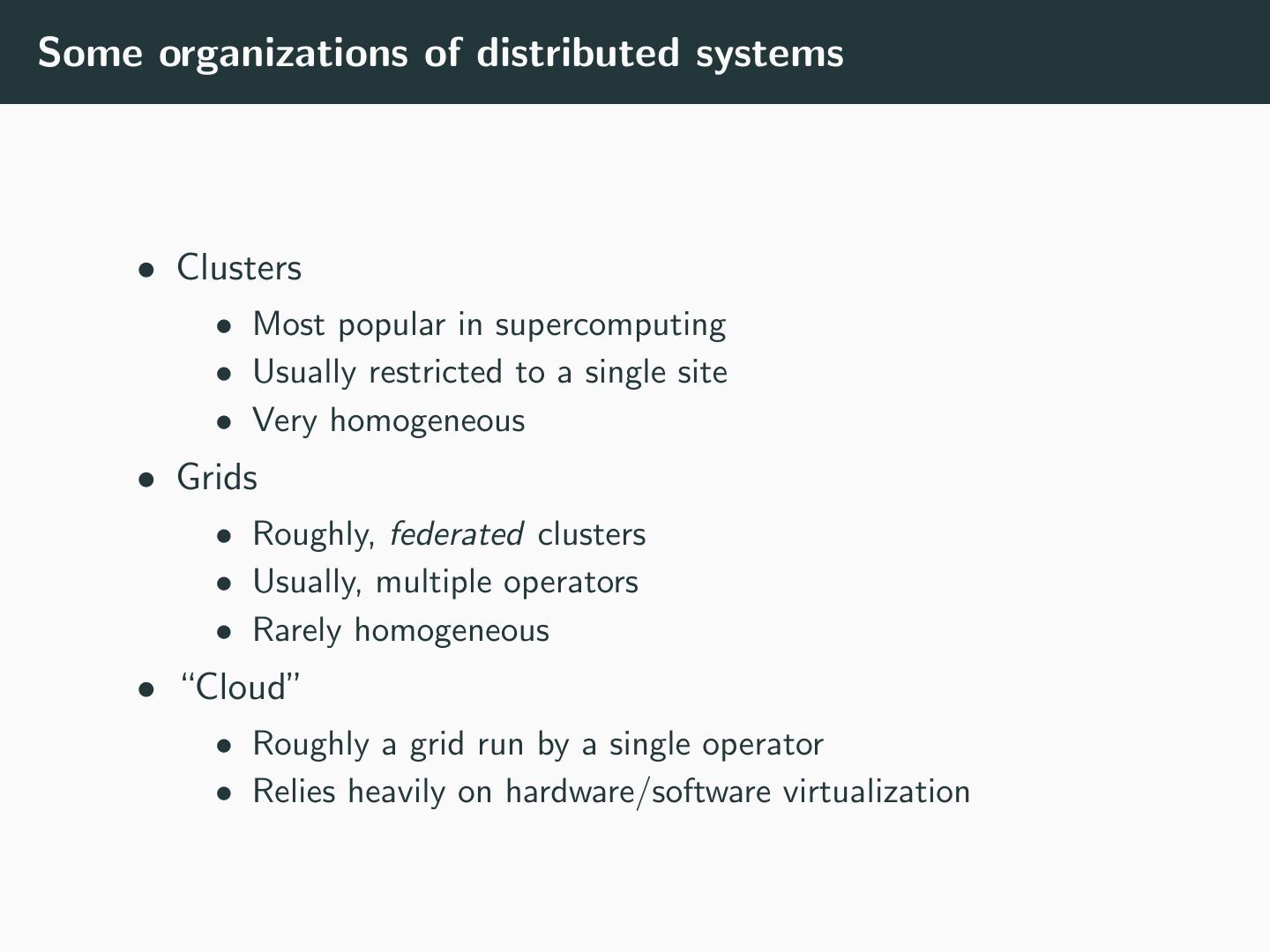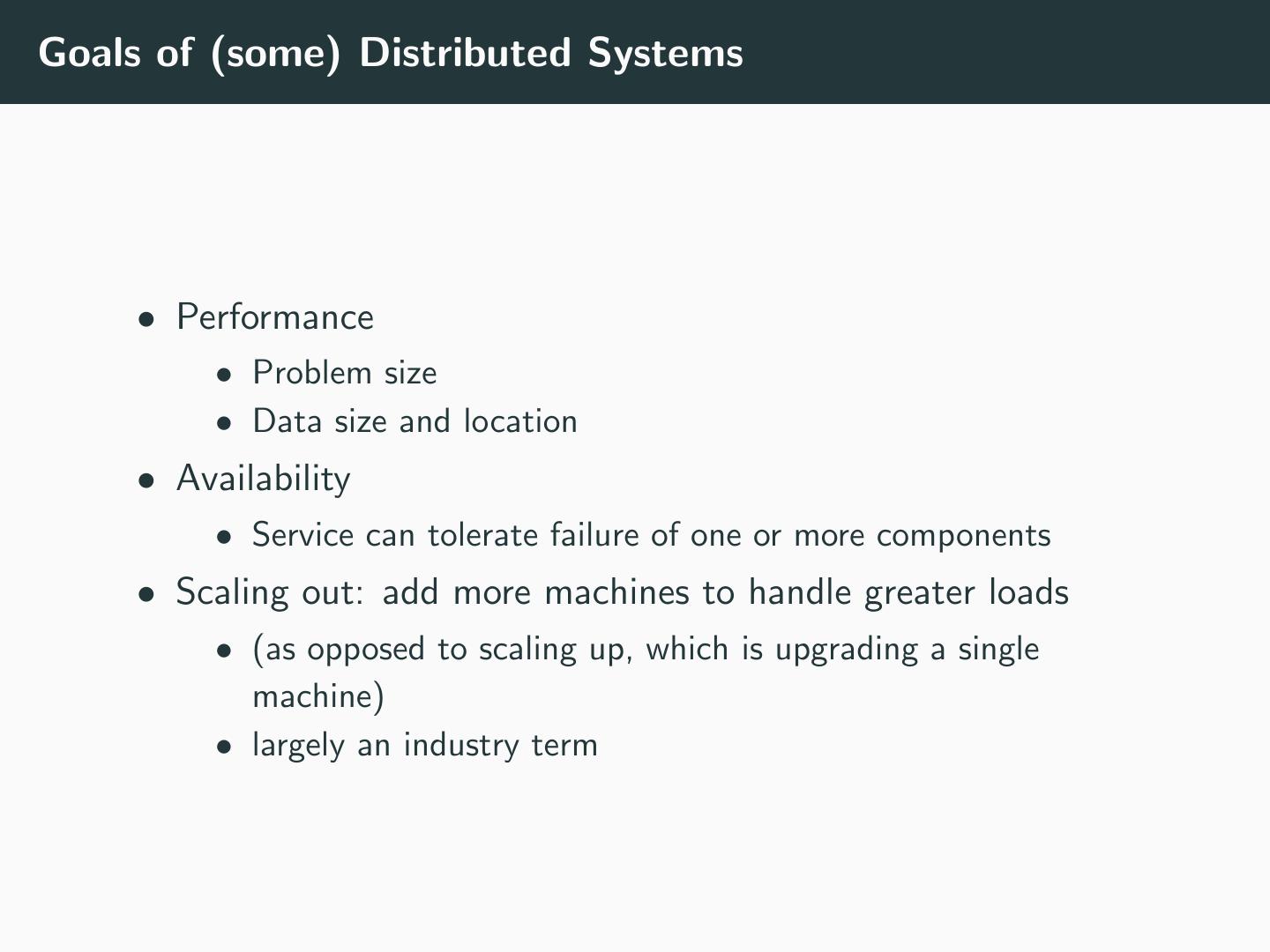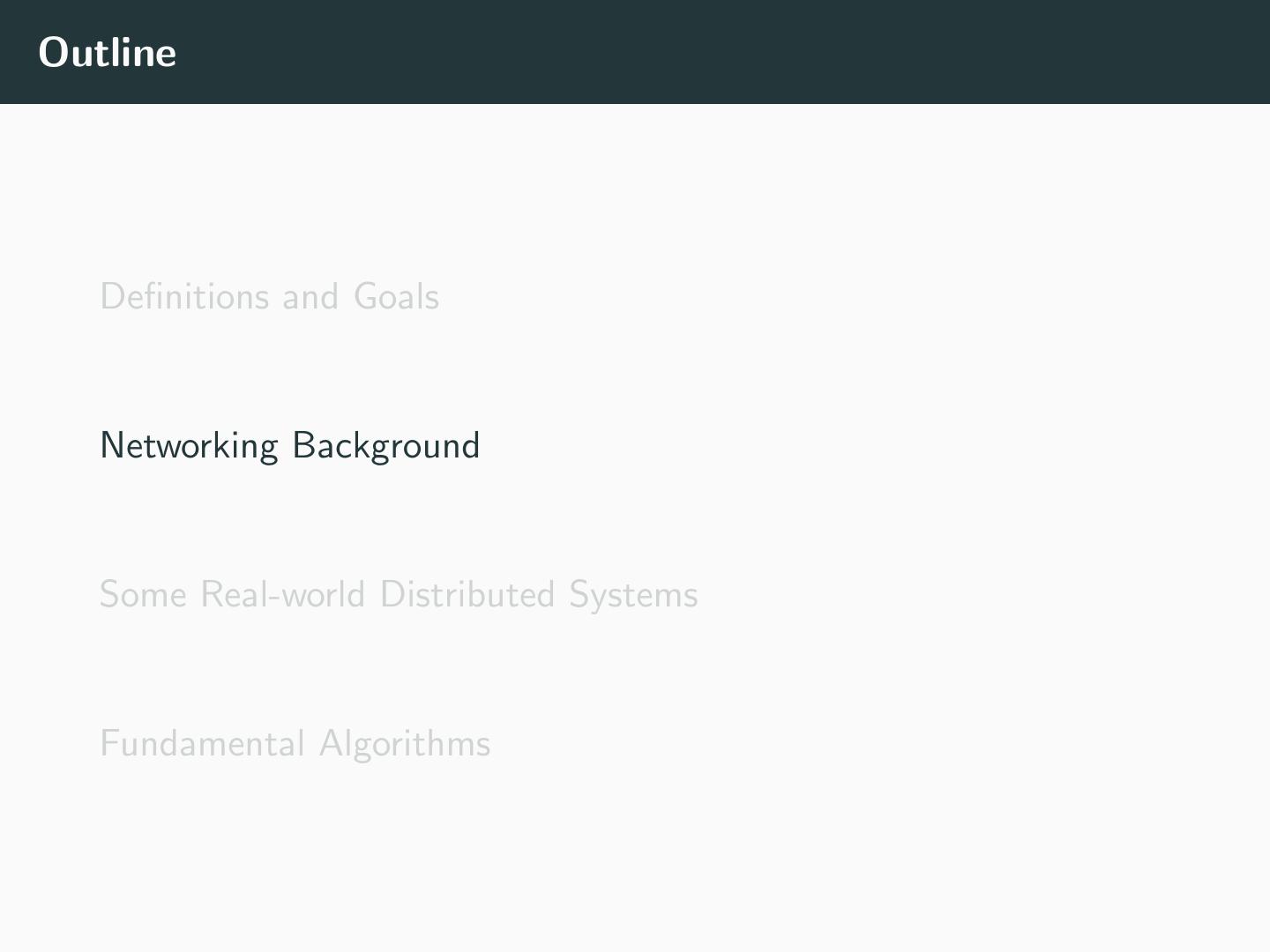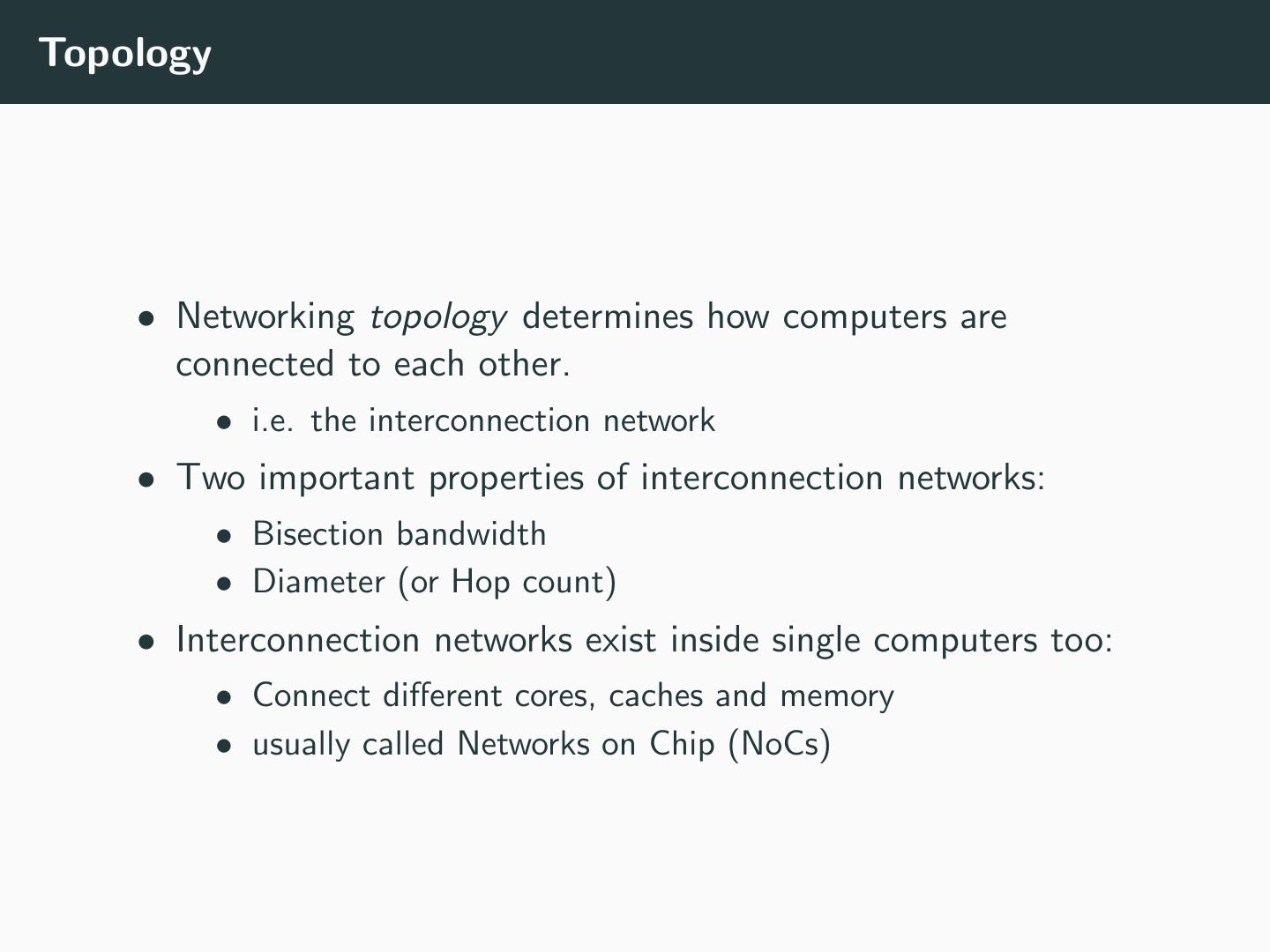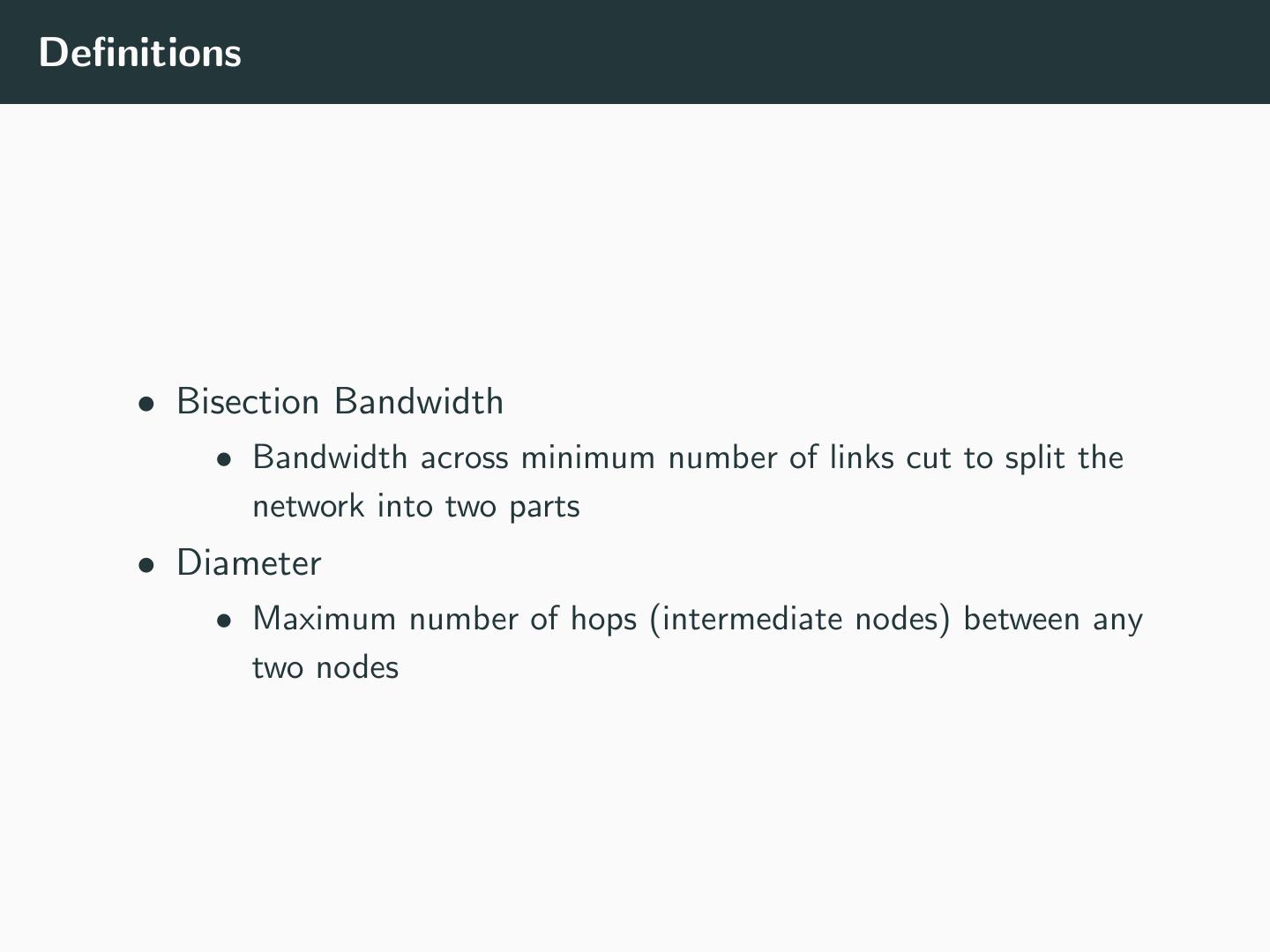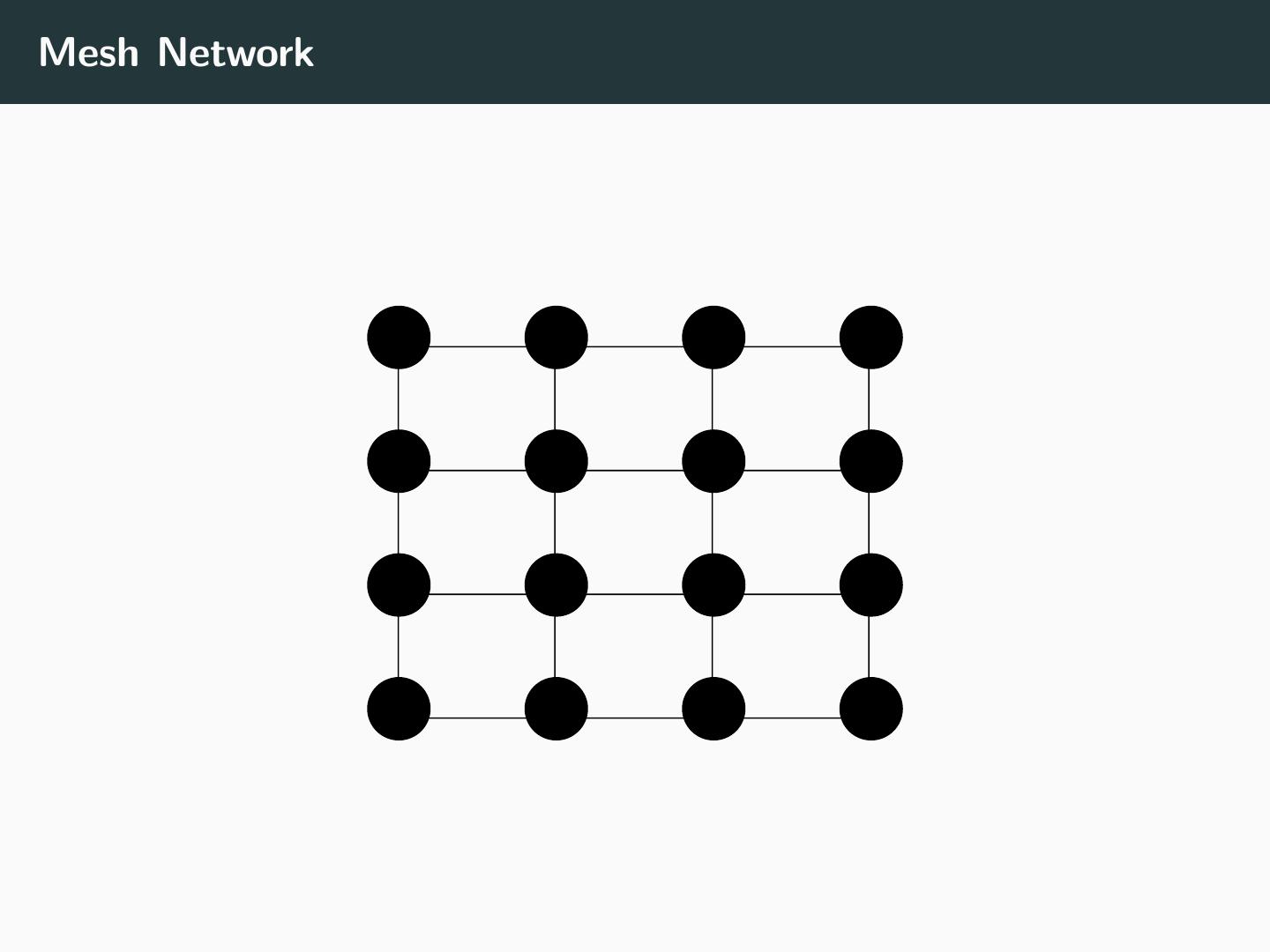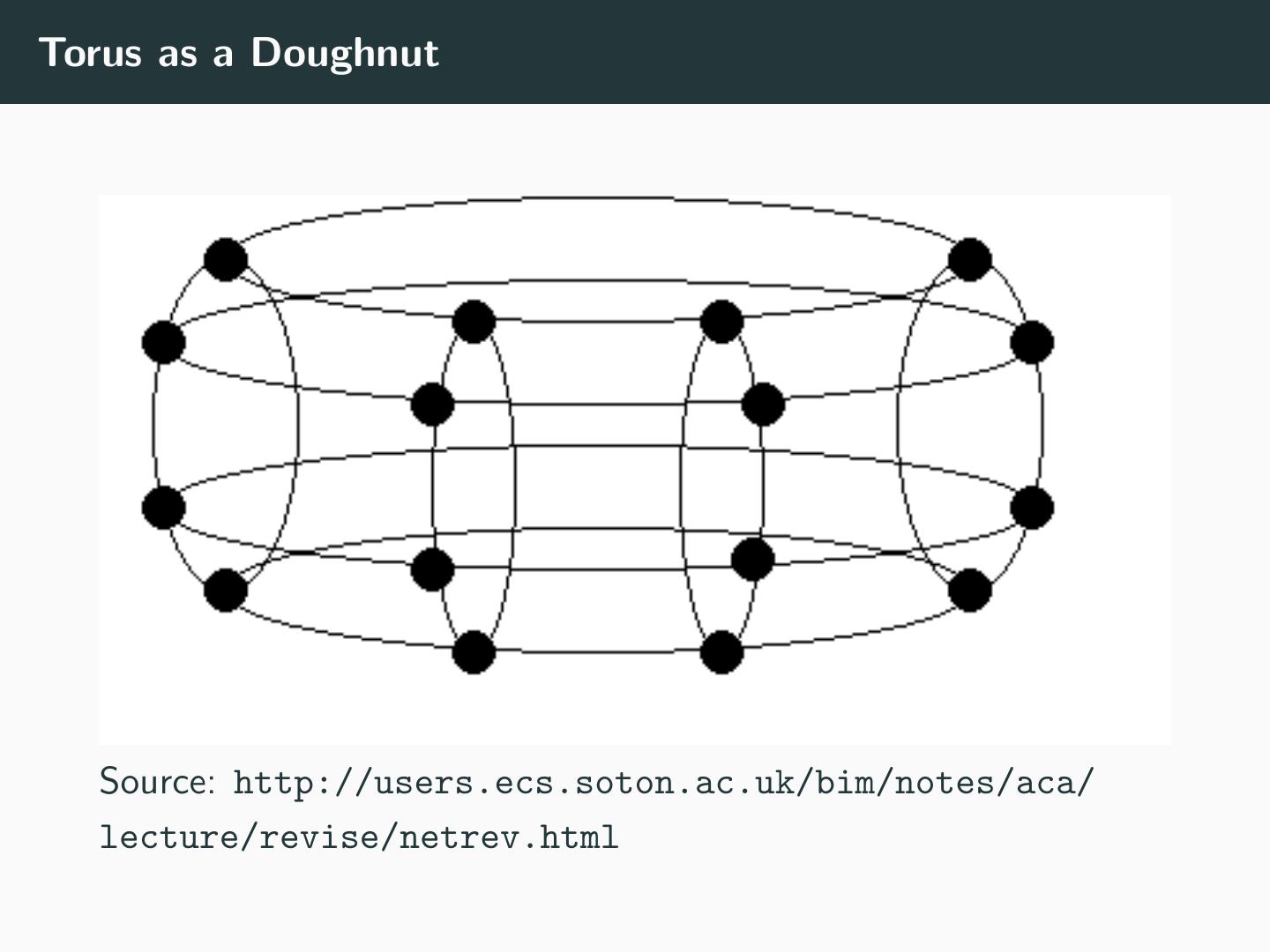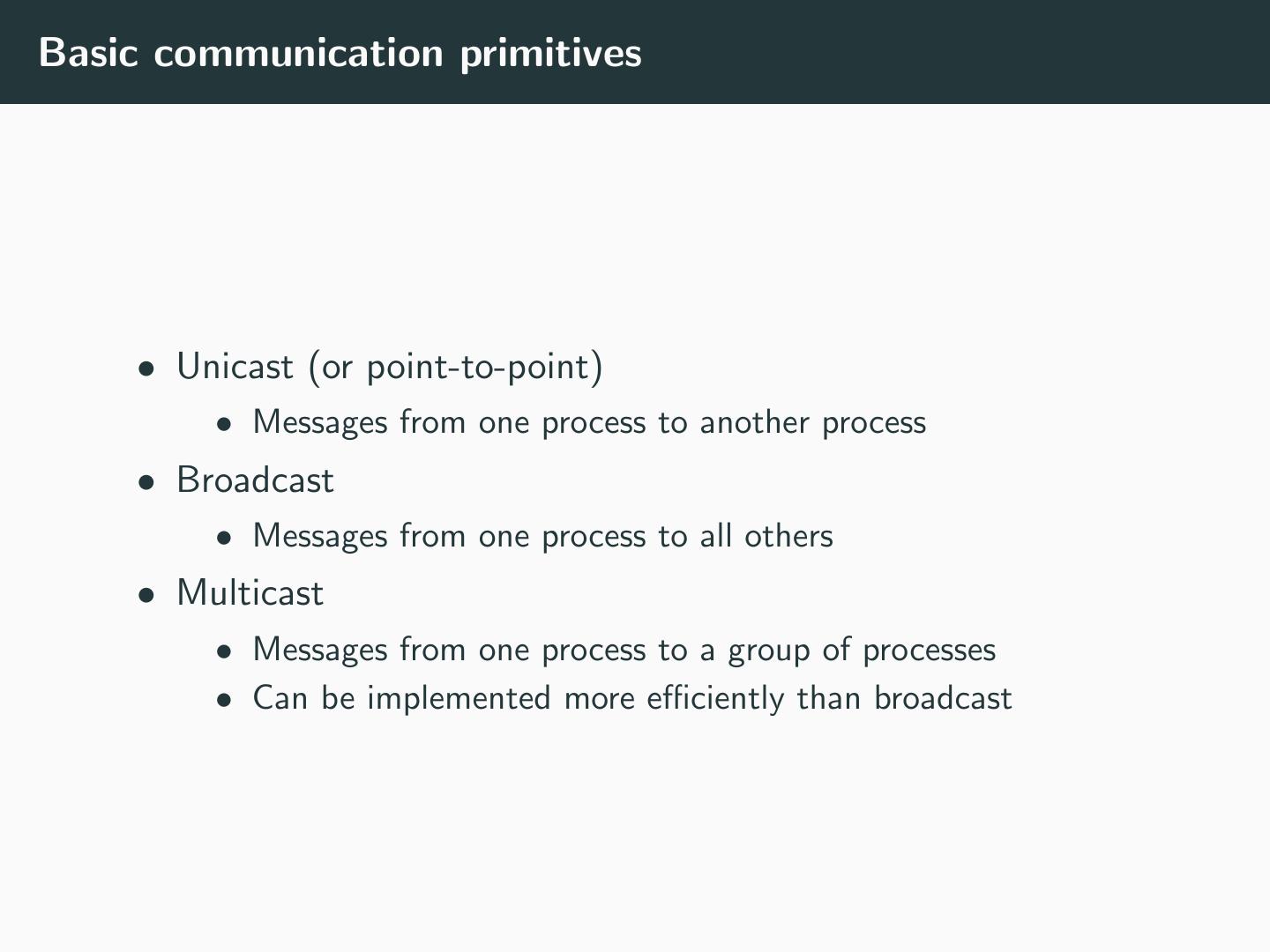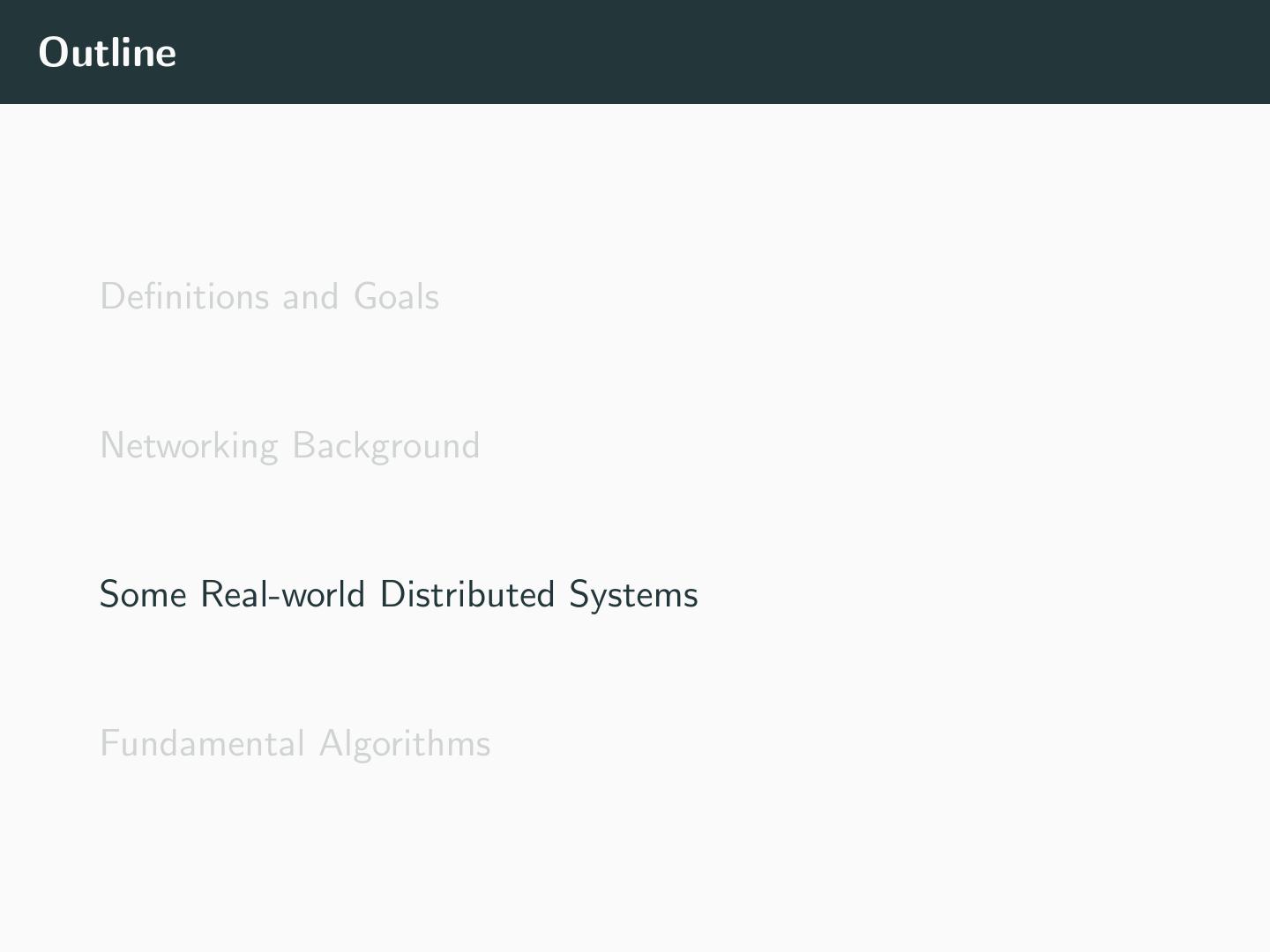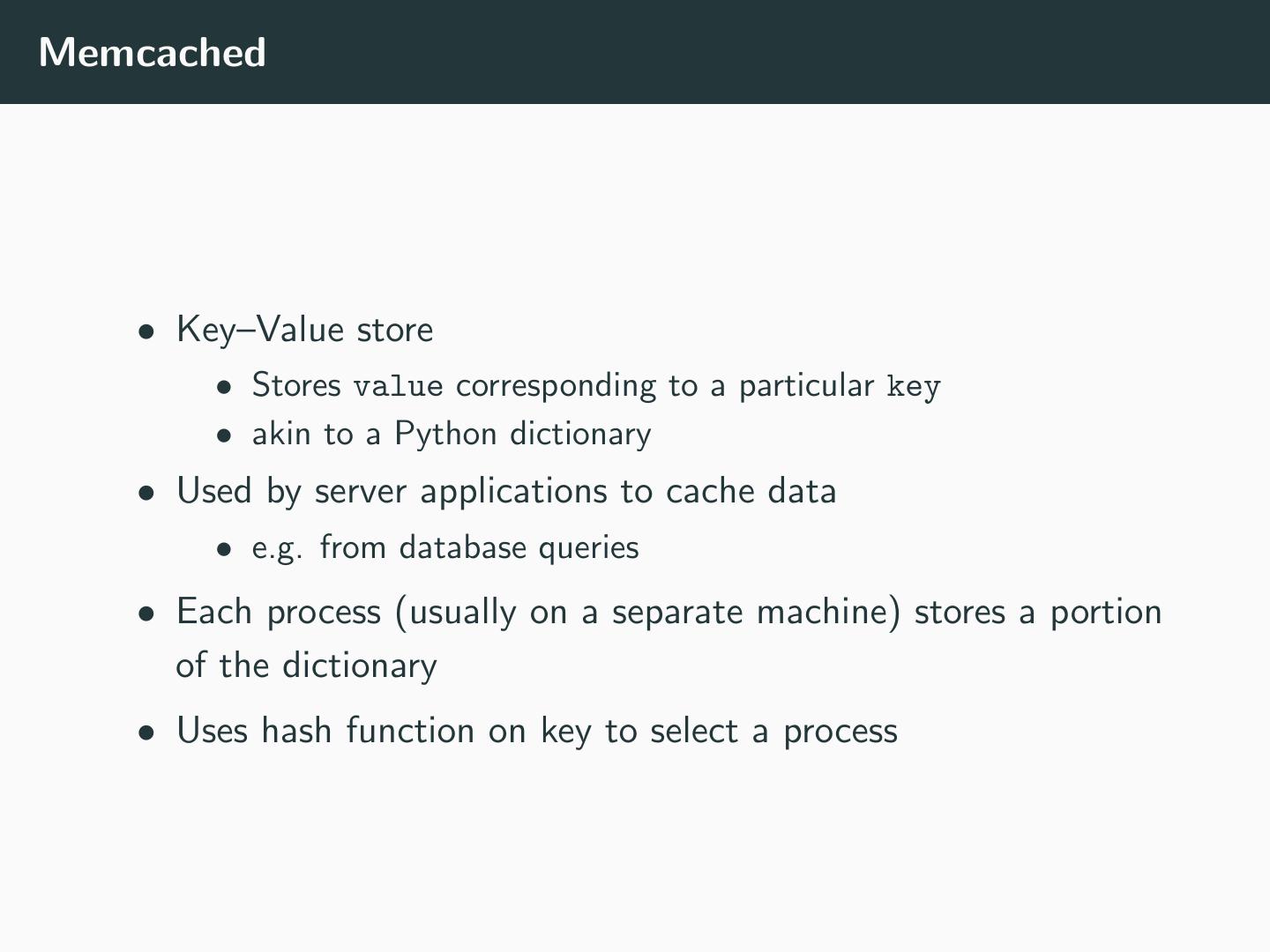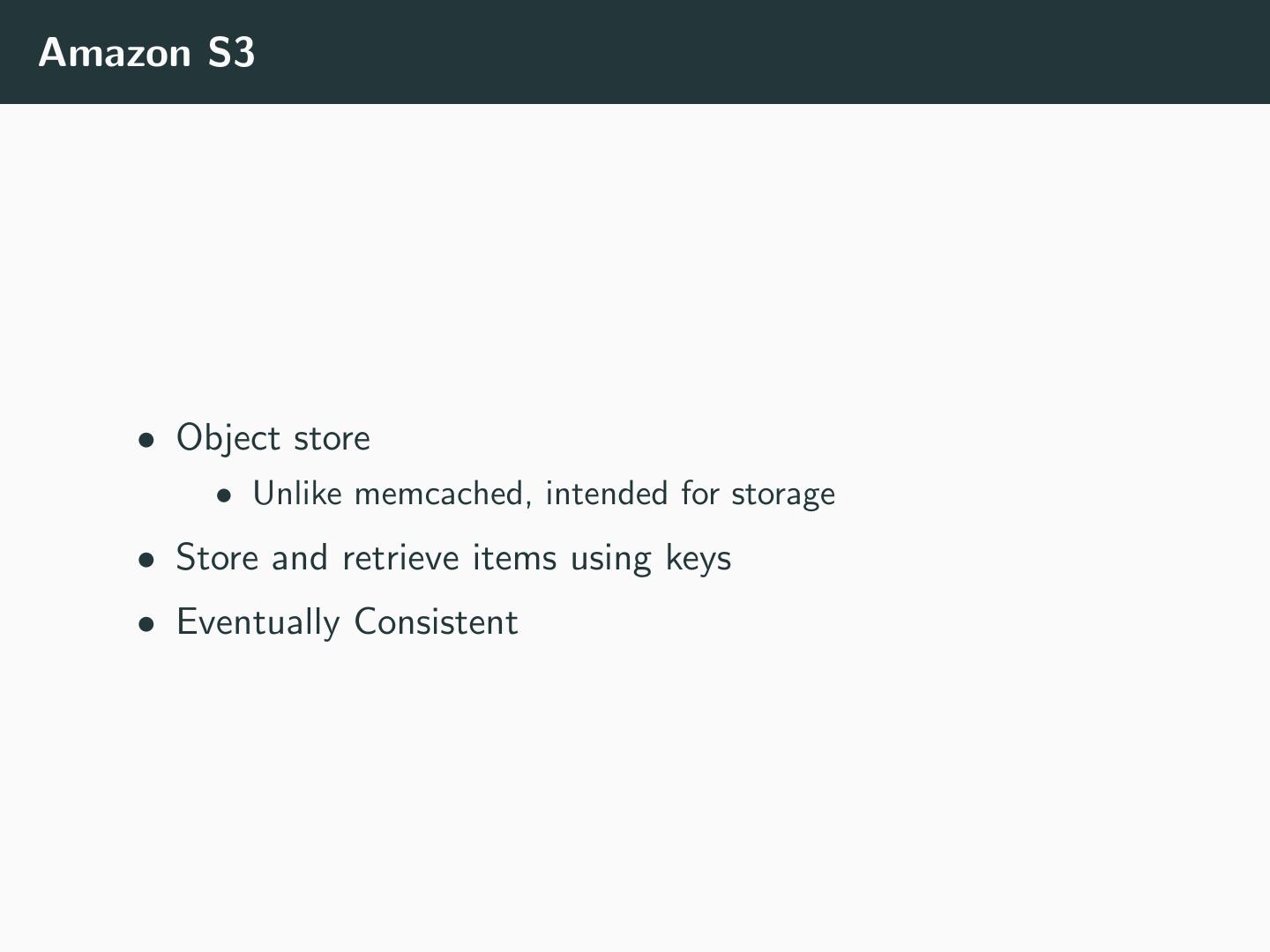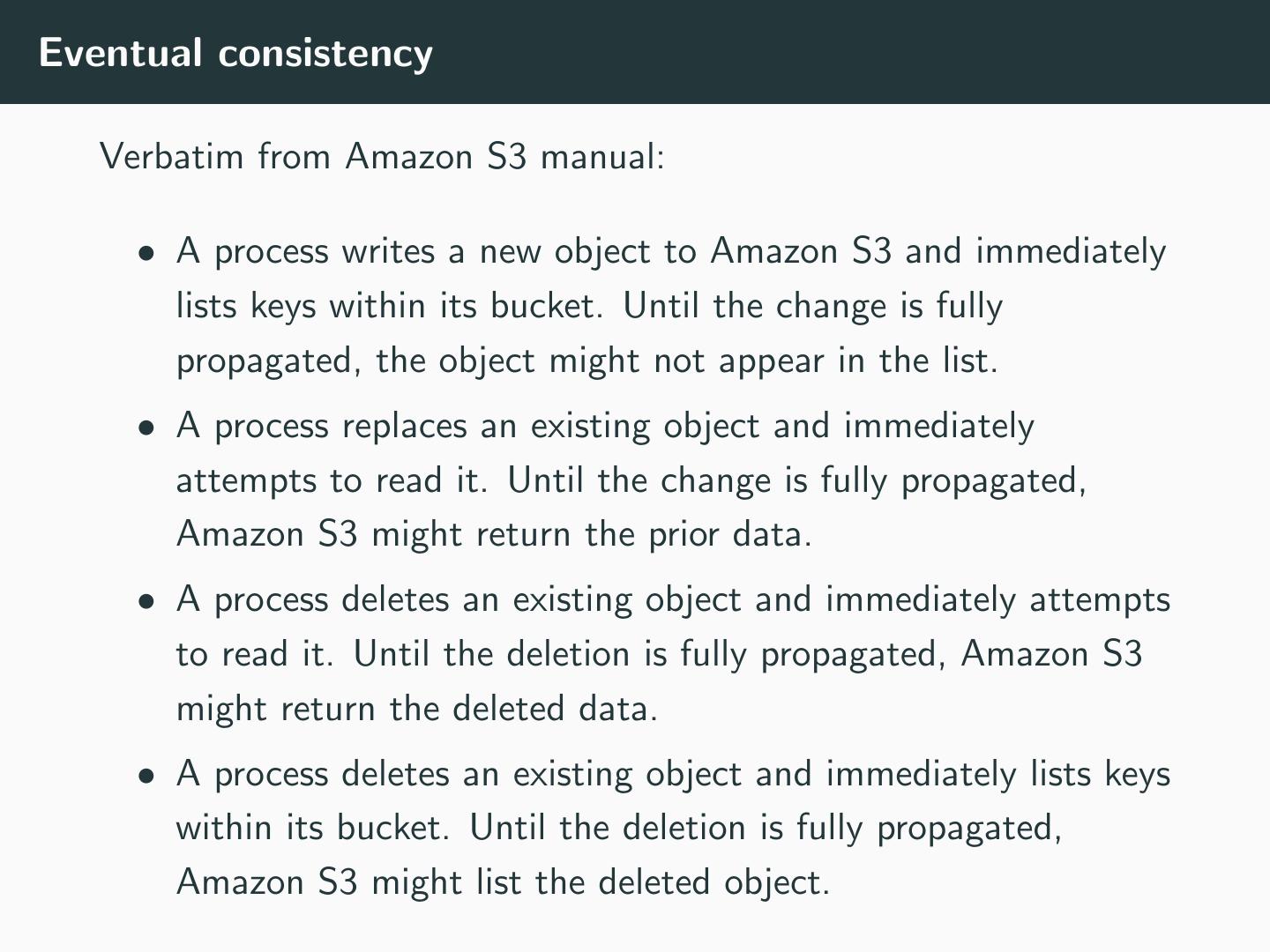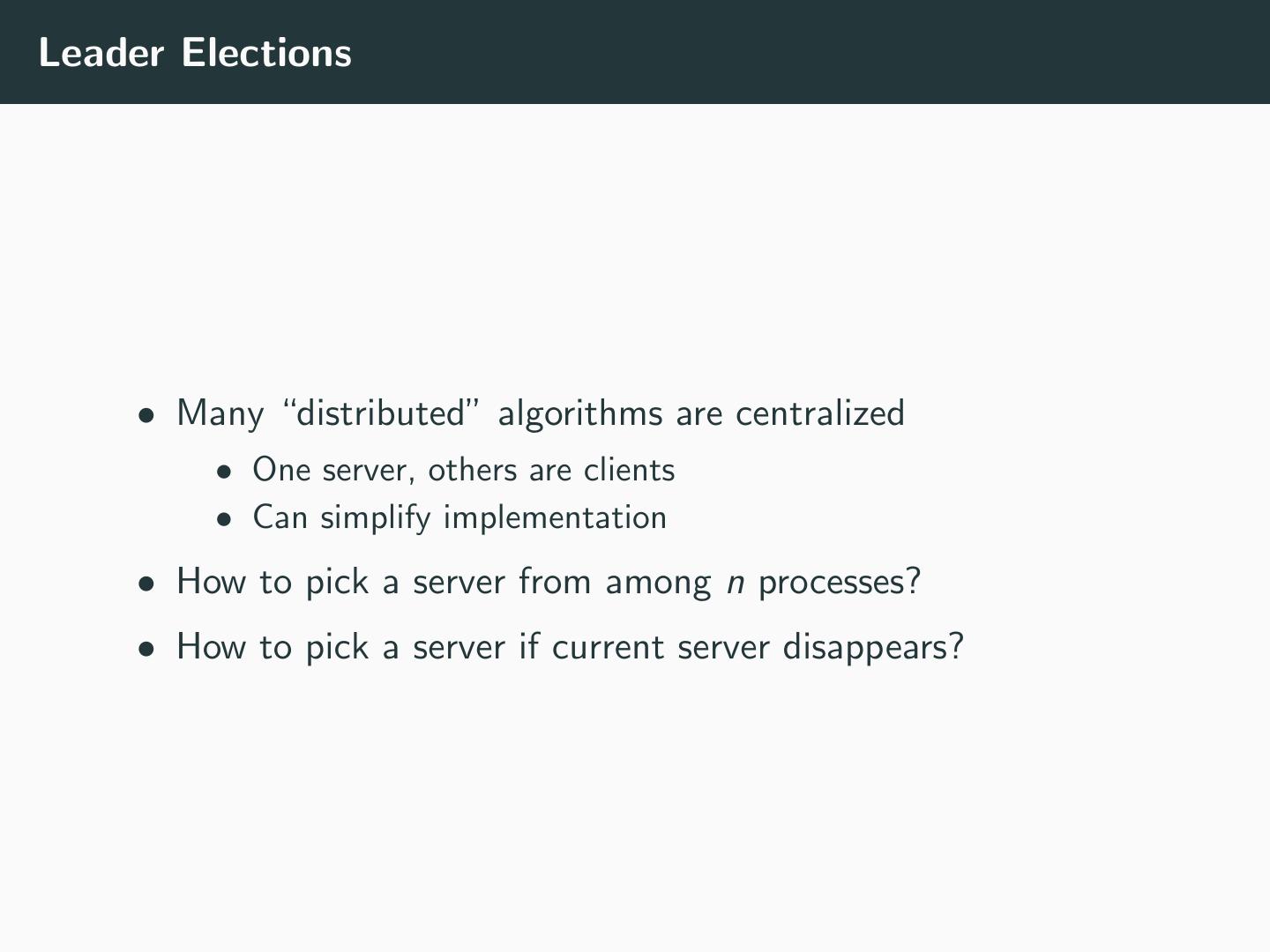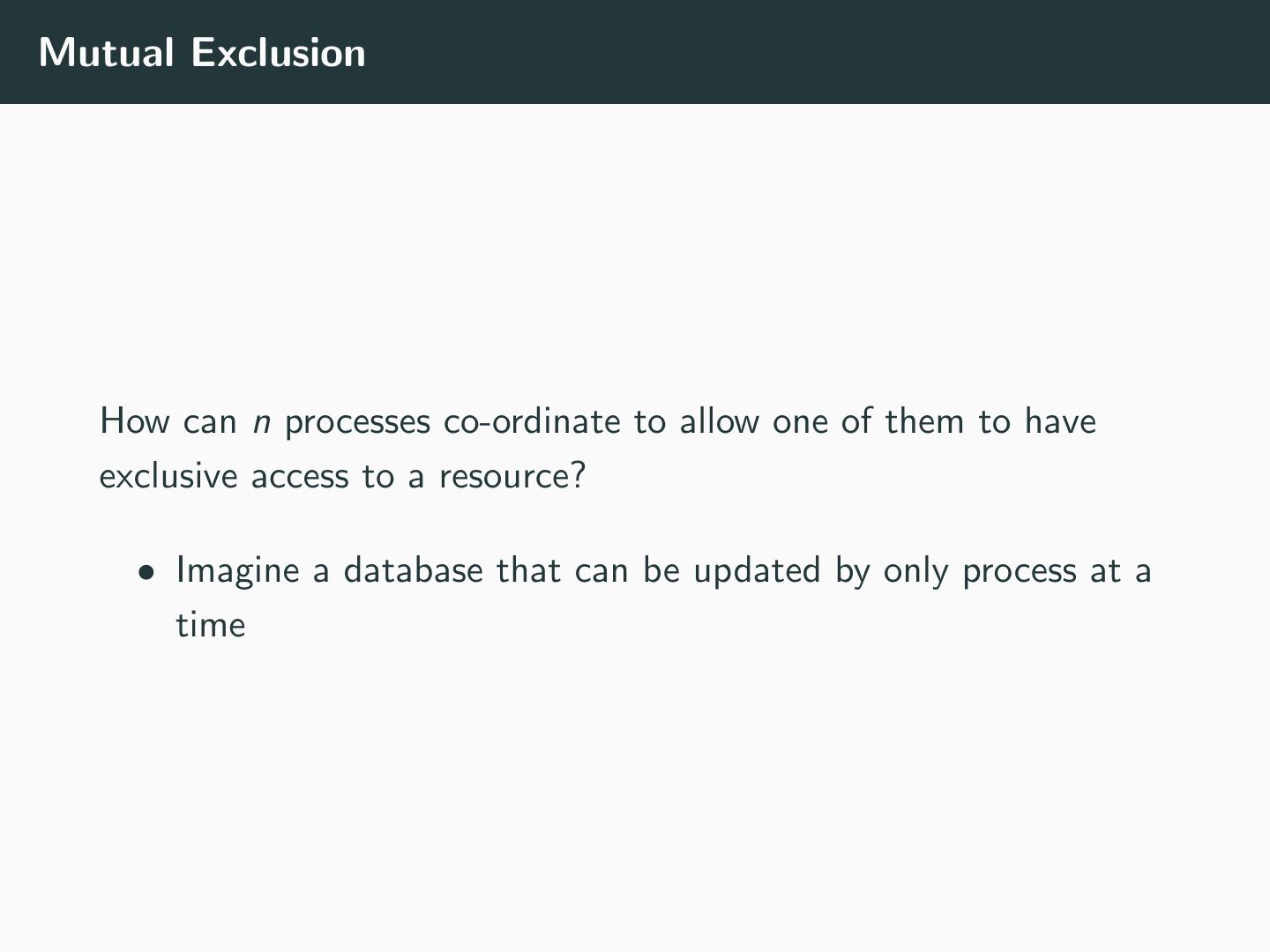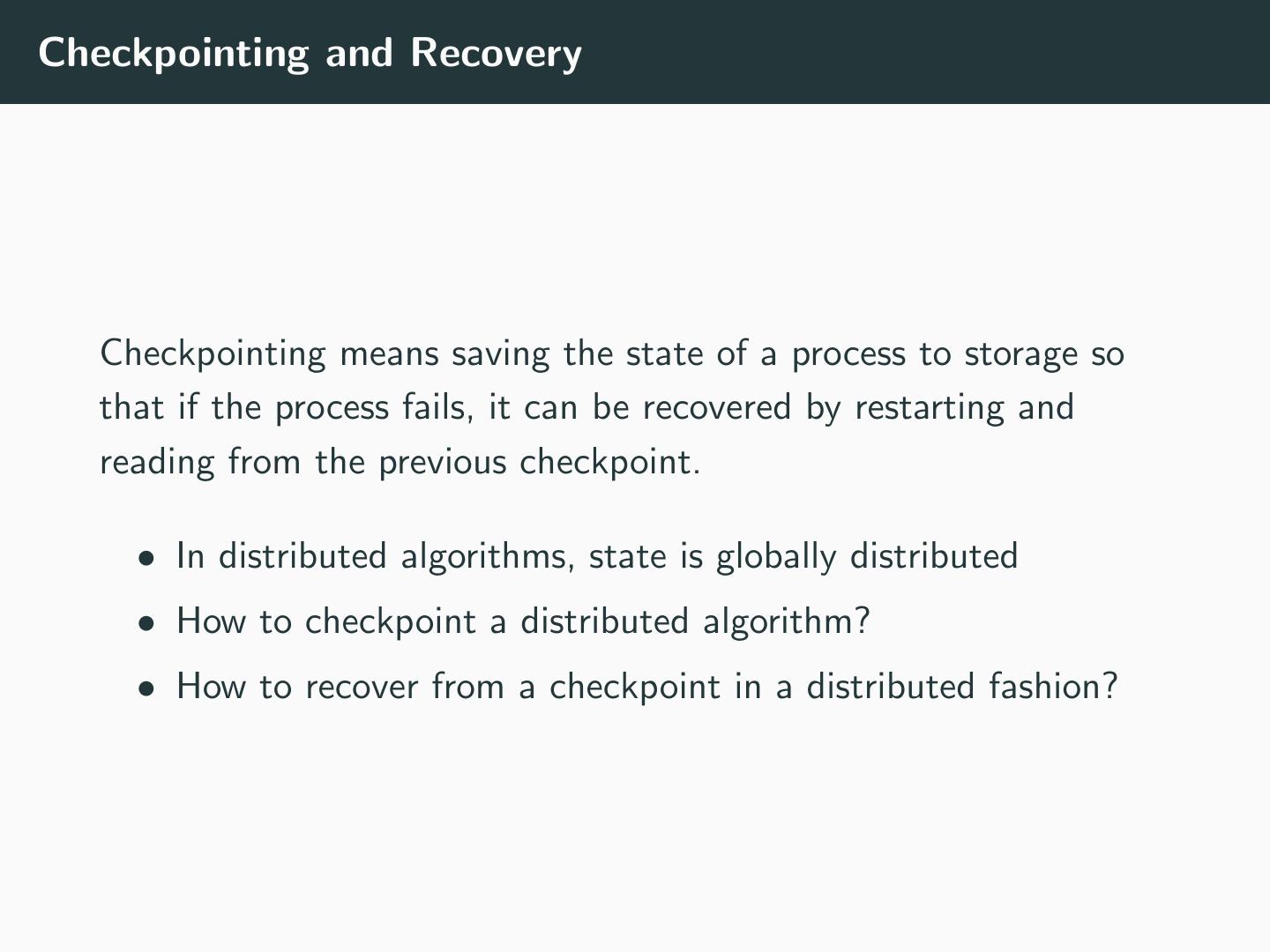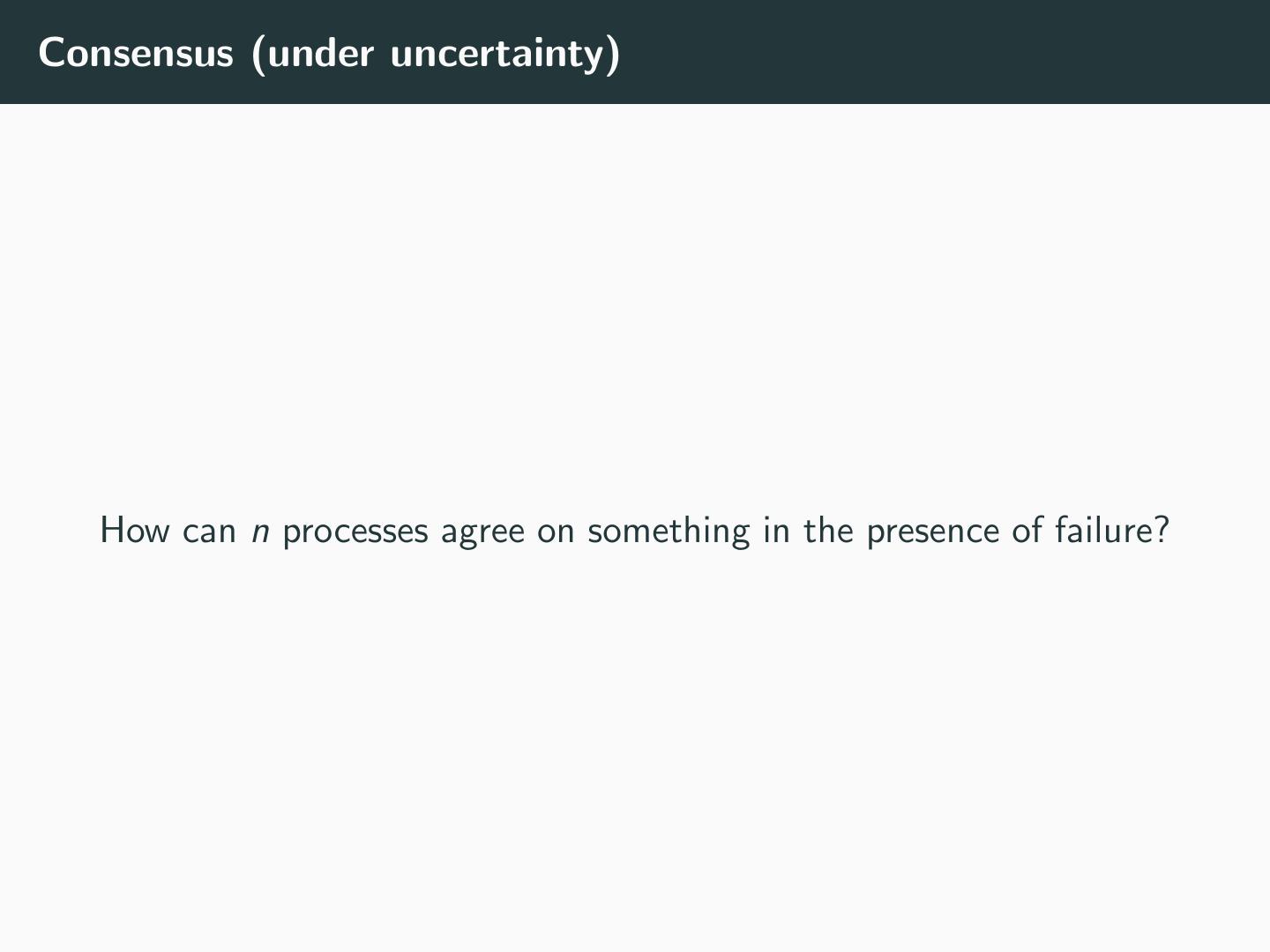- 快召唤伙伴们来围观吧
- 微博 QQ QQ空间 贴吧
- 文档嵌入链接
- <iframe src="https://www.slidestalk.com/u3796/16Distributed_Systems_Background?embed" frame border="0" width="640" height="360" scrolling="no" allowfullscreen="true">复制
- 微信扫一扫分享
16-Distributed Systems: Background
展开查看详情
1 .CSC2/458 Parallel and Distributed Systems Distributed Systems: Background Sreepathi Pai March 20, 2018 URCS
2 .Outline Definitions and Goals Networking Background Some Real-world Distributed Systems Fundamental Algorithms
3 .Outline Definitions and Goals Networking Background Some Real-world Distributed Systems Fundamental Algorithms
4 .Defining Distributed Systems A distributed system is one in which the failure of a computer you didn’t even know existed can render your own computer unusable. Leslie Lamport (1987)
5 .What we will use for this course A distributed system is a set of processes that are: • autonomous • share nothing (as opposed to shared memory) • communicate via messages [Important: a process in a distributed system may be on the same machine or on different machines.]
6 .Some organizations of distributed systems • Clusters • Most popular in supercomputing • Usually restricted to a single site • Very homogeneous • Grids • Roughly, federated clusters • Usually, multiple operators • Rarely homogeneous • “Cloud” • Roughly a grid run by a single operator • Relies heavily on hardware/software virtualization
7 .Goals of (some) Distributed Systems • Performance • Problem size • Data size and location • Availability • Service can tolerate failure of one or more components • Scaling out: add more machines to handle greater loads • (as opposed to scaling up, which is upgrading a single machine) • largely an industry term
8 .Outline Definitions and Goals Networking Background Some Real-world Distributed Systems Fundamental Algorithms
9 .Topology • Networking topology determines how computers are connected to each other. • i.e. the interconnection network • Two important properties of interconnection networks: • Bisection bandwidth • Diameter (or Hop count) • Interconnection networks exist inside single computers too: • Connect different cores, caches and memory • usually called Networks on Chip (NoCs)
10 .Definitions • Bisection Bandwidth • Bandwidth across minimum number of links cut to split the network into two parts • Diameter • Maximum number of hops (intermediate nodes) between any two nodes
11 .Linear
12 .Ring
13 .Mesh Network
14 .Torus
15 .Torus as a Doughnut Source: http://users.ecs.soton.ac.uk/bim/notes/aca/ lecture/revise/netrev.html
16 .Other network topologies • Higher-dimensional torus • Hypercubes • Trees (contain switches at interior nodes) • Fat trees
17 .Adapting an application to the topology of the network • Many distributed scientific applications exhibit communication locality • Communicate with only neighbours, for example • This communication can be taken into account when mapping processes to compute nodes • Many algorithms can also be optimized for a particular topology
18 .Layer 4 protocols • (Partial) OSI Model • Layer 1 is physical layer (e.g., Fibre) • Layer 2 is data link layer (e.g., Ethernet) • Layer 3 is transport layer (e.g., IP) • Layer 4 is network layer (e.g., TCP, UDP)
19 .TCP and UDP • IP and UDP • Datagram • Connectionless • Unreliable • Unordered • how is UDP different from IP? • TCP • Stream-based (not datagram) • Connection-oriented • Reliable • Ordered • SCTP • Newer protocol, combines TCP/UDP
20 .Basic communication primitives • Unicast (or point-to-point) • Messages from one process to another process • Broadcast • Messages from one process to all others • Multicast • Messages from one process to a group of processes • Can be implemented more efficiently than broadcast
21 .Outline Definitions and Goals Networking Background Some Real-world Distributed Systems Fundamental Algorithms
22 .Memcached • Key–Value store • Stores value corresponding to a particular key • akin to a Python dictionary • Used by server applications to cache data • e.g. from database queries • Each process (usually on a separate machine) stores a portion of the dictionary • Uses hash function on key to select a process
23 .Amazon S3 • Object store • Unlike memcached, intended for storage • Store and retrieve items using keys • Eventually Consistent
24 .Eventual consistency Verbatim from Amazon S3 manual: • A process writes a new object to Amazon S3 and immediately lists keys within its bucket. Until the change is fully propagated, the object might not appear in the list. • A process replaces an existing object and immediately attempts to read it. Until the change is fully propagated, Amazon S3 might return the prior data. • A process deletes an existing object and immediately attempts to read it. Until the deletion is fully propagated, Amazon S3 might return the deleted data. • A process deletes an existing object and immediately lists keys within its bucket. Until the deletion is fully propagated, Amazon S3 might list the deleted object.
25 .Google Cloud Spanner Cloud Spanner is the only enterprise-grade, globally-distributed, and strongly consistent database service built for the cloud specifically to combine the benefits of relational database structure with non-relational horizontal scale. - Google Cloud Spanner Marketing Materials
26 .Outline Definitions and Goals Networking Background Some Real-world Distributed Systems Fundamental Algorithms
27 .Leader Elections • Many “distributed” algorithms are centralized • One server, others are clients • Can simplify implementation • How to pick a server from among n processes? • How to pick a server if current server disappears?
28 .Mutual Exclusion How can n processes co-ordinate to allow one of them to have exclusive access to a resource? • Imagine a database that can be updated by only process at a time
29 .Deadlock Detection and Recovery How can n processes detect (and resolve) a deadlock? • Imagine a distributed database where each record in a query needs to be locked before being updated • Two queries may end up deadlocked






